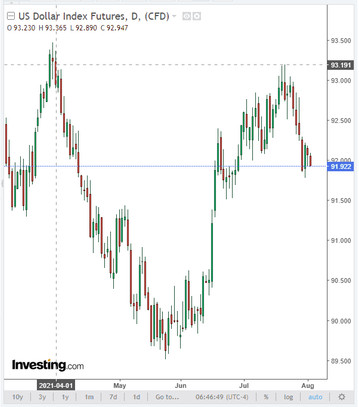At the beginning of today's trading day, the Reserve Bank of New Zealand proposed tightening mortgage lending standards from October 1. As follows from the messages received today from the RBNZ, in October the bank's management will hold "consultations on restrictions regarding the ratio of the size of debt obligations and income, the minimum level of interest rates", since “the previous restrictions did not lead to a significant reduction in risky lending”. The goal of these measures is to reduce the share of the most risky new home loans to 10% from the current level of 20%.
This news contributed to a rather sharp strengthening of the New Zealand dollar during today's Asian trading session.
In particular, the NZD / USD pair rose by 0.76% by the beginning of the European session, adding 53 points to the closing price of the previous trading day. As of this writing, the NZD / USD is traded near 0.7010 mark, declining from today's intraday high of 0.7018, once again attempting to break through the strong resistance at 0.7015 (see Technical Analysis and Trading Recommendations).
The RBNZ meeting, dedicated to monetary policy issues, will take place on August 18. Earlier, the RBNZ said that against the background of "many factors of uncertainty" monetary policy "will remain soft for the foreseeable future", but "can be adjusted accordingly". Expectations that the Reserve Bank of New Zealand may raise rates already at this meeting, one of the first among the world's largest central banks, support the NZD. In New Zealand, unlike other countries with the world's largest economies, the authorities manage to keep the coronavirus under control and solve the problem of overheating of the economy.
Volatility in NZD quotes may rise again today, when the Global Dairy Trade report is published after 14:00 (GMT). A similar report released on July 20 indicated a decrease in the price index for dairy products by -2.9% after its steady decline in the previous 2-week periods (-3.6%, -1.3%, -0.9%, - 0.2%, -0.7%, -0.1%), and this is a negative factor for the NZD. A significant portion of New Zealand's exports are dairy products, primarily milk powder. The decline in world prices for dairy products has a negative impact on the NZD, reducing the level of export foreign exchange earnings to the country's budget. The next decline in the dairy price index is likely to have a short-term negative impact on the NZD and the NZD / USD pair, but the rise in the index will support the NZD.
And at 22: 45 (GMT), the report of the New Zealand Bureau of Statistics on changes in the employment rate and the unemployment rate for the 2nd quarter will be published. The rise in the employment rate indicator has a positive impact on consumer spending, which stimulates economic growth. A high reading is positive for the NZD, while a low reading is negative. Outlook: in the 2nd quarter, the number of employed New Zealand citizens increased and the employment rate increased by +0.7% (after growing by +0.6% in the 1st quarter of 2021 and in the 4th quarter of 2020), which is likely to support the NZD quotes.
The unemployment rate is also expected to decline (to 4.5% from 4.7% in the 1st quarter), which is also a positive factor for the NZD.
The conclusion suggests itself that the NZD / USD pair may develop positive dynamics, breaking into the zone above the resistance level 0.7050, and the important macro statistics from New Zealand expected today will help it in this, unless, of course, it turns out to be significantly worse than forecasted.

The continuing weakening of the US dollar (at the time of publication of this article, the DXY dollar index was at 91.92, 127 points below the maximum reached last month) also contributes to the realization of our assumption that the NZD / USD will continue to rise if it breaks into the zone above the resistance level 0.7015. Although, it should also be borne in mind that the potential for a deeper decline in the US dollar seems to be very limited, given the existing risks for the prospects for economic growth, including due to the spread of new strains of coronavirus, and the expected normalization of monetary policy in the United States towards its gradual tightening.





